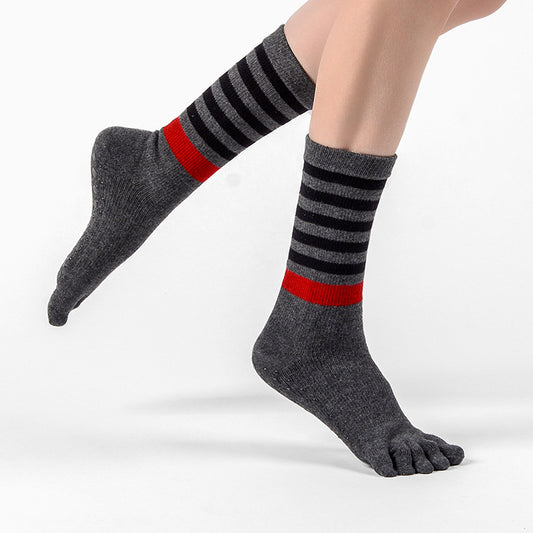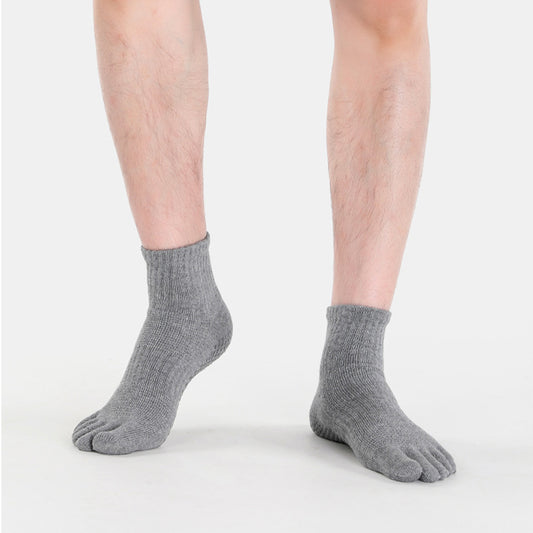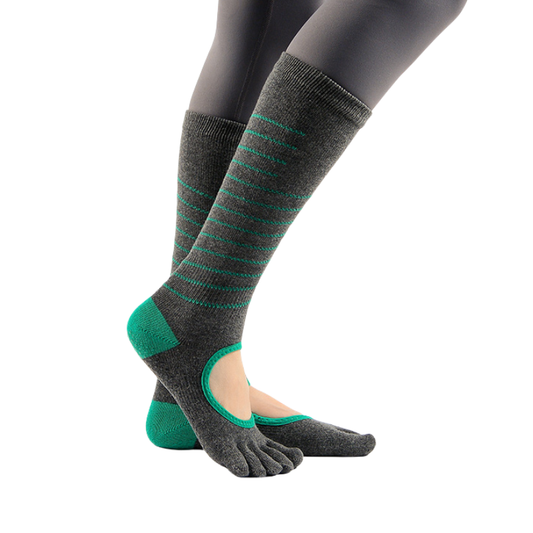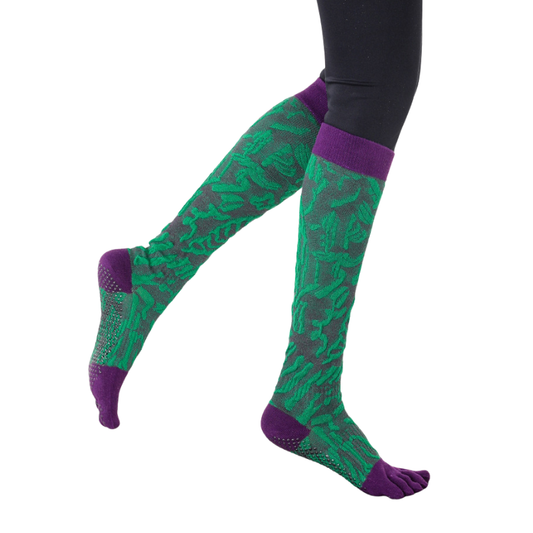Introduction
Every yogi has faced this question at some point: Is it better to practice barefoot or with Yoga Socks? While many traditionalists argue that yoga should always be practiced barefoot for natural connection, others find non-slip socks essential for safety, hygiene, and comfort. The truth lies somewhere in between. In this article, we’ll explore the science, benefits, and drawbacks of both approaches so you can make the best choice for your practice.
Barefoot Yoga: The Traditional Approach
Yoga has been practiced barefoot for thousands of years. Removing footwear allows direct contact with the mat or floor, giving the feet freedom to move, stretch, and strengthen naturally.
Advantages of Barefoot Yoga:
-
Natural proprioception: Direct sensory feedback helps improve alignment and balance (Medium).
-
Toe splay & arch strengthening: Encourages natural movement of toes and activation of foot muscles.
-
Grounding: Many practitioners feel more connected physically and spiritually without barriers.
Drawbacks of Barefoot Yoga:
-
Risk of slipping on sweaty mats or hardwood floors.
-
Cold feet in air-conditioned or winter studios.
-
Hygiene issues on shared mats or studio floors (fungal and bacterial exposure).

Practicing with Yoga Socks: The Modern Solution
Yoga Socks are specially designed with non-slip grips (usually silicone or rubberized dots) on the sole. They reduce slipping and create stability in challenging postures.
Advantages of Yoga Socks:
-
Stability and safety: The grip surface helps prevent slips, especially in hot yoga or on smooth floors (iCompressionSocks).
-
Hygiene protection: Acts as a barrier against germs and fungi on shared surfaces (Dallas Yoga Magazine).
-
Comfort and warmth: Keeps feet cozy in cold environments, especially restorative or Yin practices.
-
Multi-discipline use: Effective for Pilates, barre, and even at-home workouts.

Drawbacks of Yoga Socks:
-
May reduce sensory feedback compared to bare feet.
-
Grip quality varies; low-quality socks can bunch or lose traction over time.
-
Need replacement every 3–6 months with frequent use.
Biomechanics: Foot Function and Performance
From a biomechanical perspective, barefoot practice enhances proprioception, strengthening foot muscles and improving body awareness. However, Yoga Socks support performance in another way: by stabilizing the base of support.
A podiatrist quoted in Dallas Yoga Magazine explained that non-slip socks help people with weak arches or balance concerns stay grounded, lowering injury risk. This is especially relevant for beginners, seniors, or anyone recovering from minor injuries.
Stability, Grip, and Injury Prevention
Injury prevention is one of the strongest arguments for Yoga Socks. Slips in postures like Downward Dog or Warrior III can lead to ankle sprains or wrist strain. A Mayo Clinic Pilates instructor also noted that non-slip socks help students feel more secure on reformers, reducing falls and missteps (Mayo Clinic Press).
For yogis practicing in heated studios or on slick surfaces, Yoga Socks provide measurable performance advantages by reducing risk and maintaining consistent form.
Hygiene, Temperature, and Comfort
Shared yoga spaces can harbor bacteria, fungi, or viruses. According to Dallas Yoga Magazine, socks offer a protective barrier for those with concerns about hygiene.
They also improve comfort in colder environments, where bare feet can feel stiff and distract from concentration. On the flip side, barefoot practice offers superior breathability and avoids the discomfort of poorly fitted socks.
Which Option Supports Better Performance?
The answer depends on your practice style, health, and environment:
-
Choose barefoot if you value natural foot engagement, are comfortable with hygiene standards, and practice on a quality non-slip mat.
-
Choose Yoga Socks if you practice hot yoga, attend crowded studios, want extra stability, or prefer added warmth and protection.
For many practitioners, alternating between the two—barefoot at home and Yoga Socks in public studios—offers the best balance of performance and safety.
Conclusion
There is no universal answer to the barefoot vs. Yoga Socks debate. Barefoot yoga strengthens and grounds your body, while Yoga Socks provide enhanced grip, safety, and hygiene. Ultimately, the right choice depends on your body’s needs and your practice environment.
Whether you slip into a pair of Yoga Socks or embrace barefoot tradition, the key is choosing what allows you to move confidently, safely, and mindfully on the mat.
References







